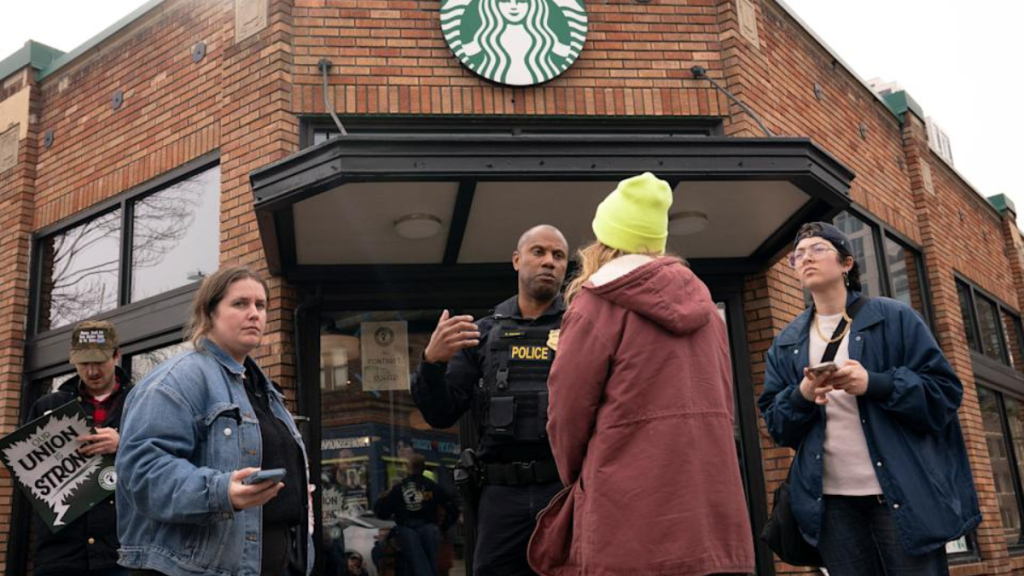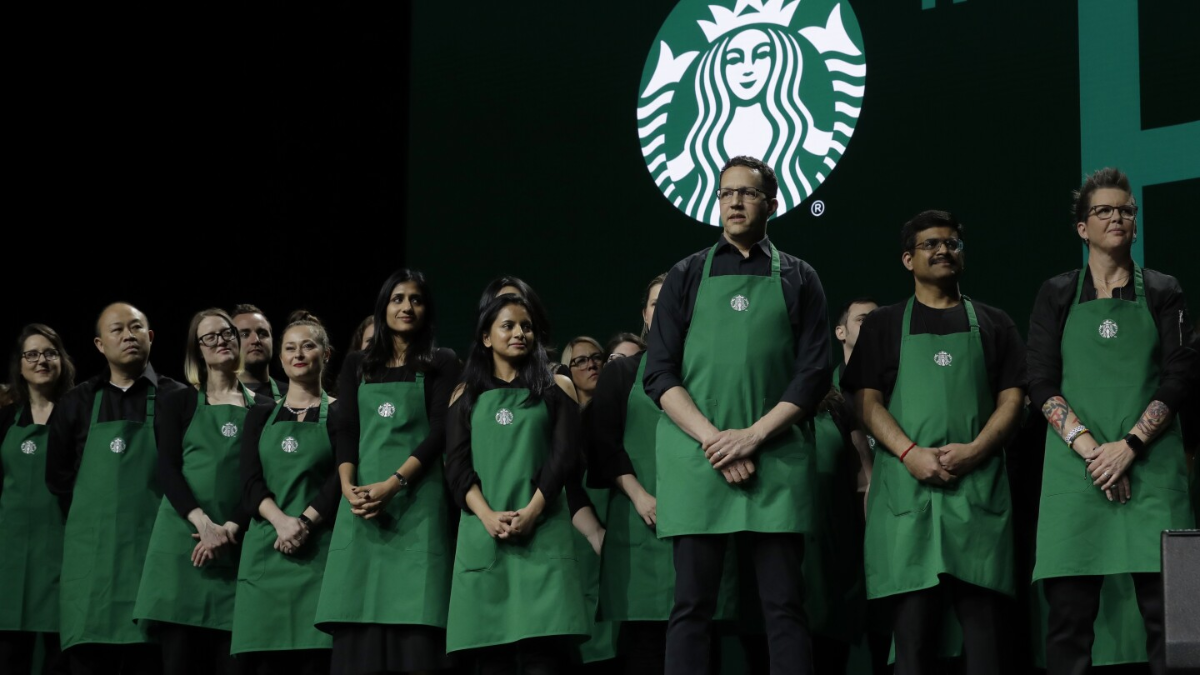Thousands of Starbucks employees across the United States have staged walkouts in protest of a newly implemented dress code policy they say is unfair, restrictive, and targeted. The labor action, organized by Starbucks Workers United, has drawn attention from both supporters and corporate leadership as the company navigates continued labor disputes.
The walkouts began in early May 2025 and have impacted more than 200 store locations nationwide. According to the union, over 3,000 workers participated in the action during the first week alone.
“This isn’t just about clothing—it’s about respect, inclusion, and the right to workplace expression,” said Michelle Eisen, a union organizer and longtime Starbucks barista based in Buffalo, New York.
What Does the New Dress Code Say?
Starbucks introduced changes to its employee dress code policy in April 2025, citing the need for a more “professional and unified brand image.” The new rules prohibit workers from wearing clothing with visible political messages, including union insignia, and place limits on personal expression through pins, buttons, and color choices.
The revised policy specifically states:
- No logos or symbols representing political or social causes, including unions.
- All visible tattoos must be covered if deemed “inappropriate” by management.
- Hair color must be natural shades.
- Jewelry, including buttons and pins, must be Starbucks-branded or pre-approved.
These updates marked a shift from previous guidelines, which allowed more freedom for employees to wear pins or clothing reflecting personal beliefs, including those supporting labor organizing efforts.
Why Are Workers Walking Out?
Employees and union organizers argue that the new dress code is a direct response to the growing unionization movement within the company. Starbucks Workers United, which represents employees in more than 400 stores, has accused Starbucks of suppressing pro-union expression and retaliating against workers advocating for better conditions.
“Starbucks is trying to silence us by banning union pins and controlling how we look at work,” said Ana Sanchez, a barista in Chicago. “We deserve to show support for our coworkers and our rights without fear of discipline.”
The National Labor Relations Board (NLRB) has already received complaints from union representatives alleging that the new dress code violates federal labor law by infringing on protected organizing activity. Under the National Labor Relations Act, workers are allowed to display union support at work unless it interferes with business operations.
How Many Stores and Workers Are Involved?
Starbucks Workers United reported that the dress code protest has led to walkouts in over 200 Starbucks locations across at least 30 states. While not every store is unionized, solidarity strikes and protests have taken place in both union and non-union shops.
The walkouts have been coordinated alongside rallies and picketing, with many baristas wearing union gear and holding signs calling for workplace dignity and freedom of expression. In some locations, customers joined in support or refused to cross picket lines.
A full list of unionized stores and updates on labor actions can be found through the NLRB’s Starbucks case database.
Starbucks Responds
In a public statement, Starbucks said the dress code revisions were designed to “maintain consistency and professionalism in our stores” and were not intended to limit union activity or political expression outside the workplace.
“We respect our partners’ rights and continue to engage with them constructively,” the company said. “Our dress code aims to support a welcoming environment for all customers and partners.”
However, legal experts suggest that Starbucks may face continued scrutiny if the dress code is interpreted as targeting union support, which could be considered a form of unfair labor practice.

Broader Labor Tensions at Starbucks
The dress code controversy is the latest chapter in Starbucks’ broader labor challenges. Since late 2021, workers have been organizing at a rapid pace, becoming one of the largest modern private-sector union drives in the U.S.
As of May 2025, over 400 locations have voted to unionize, and numerous complaints about union busting have been filed with the NLRB.
In recent months, federal labor officials ruled that Starbucks violated workers’ rights at several stores, including by closing union-friendly locations or disciplining pro-union employees. Starbucks has denied wrongdoing and appealed several rulings.
The company’s labor practices have also caught the attention of lawmakers. Senator Bernie Sanders held a Senate Health, Education, Labor, and Pensions (HELP) Committee hearing in 2023 where Starbucks executives were questioned about their response to union efforts.
What Happens Next?
Union leaders say they will continue the protests until the dress code policy is revoked or amended through negotiations. They’re also calling on the NLRB to investigate the new rules as potentially illegal restrictions on worker expression.
The Starbucks Workers United campaign is urging supporters to sign petitions, boycott certain locations, and attend rallies in solidarity with striking baristas.
Meanwhile, the NLRB has not yet issued a formal ruling on the dress code complaints but is expected to conduct hearings in the coming months.
Conclusion
The dispute over Starbucks’ dress code has intensified tensions between the coffee giant and its growing union workforce. With thousands of employees participating in walkouts and legal challenges mounting, the company faces increased pressure to balance brand consistency with workers’ rights.
As the situation evolves, both legal and labor experts will be watching closely to see whether Starbucks’ new dress policy withstands scrutiny under federal labor law.
For more information about worker rights and ongoing union disputes, visit the National Labor Relations Board (NLRB) and the U.S. Department of Labor.
Disclaimer – Our team has carefully fact-checked this article to make sure it’s accurate and free from any misinformation. We’re dedicated to keeping our content honest and reliable for our readers.
